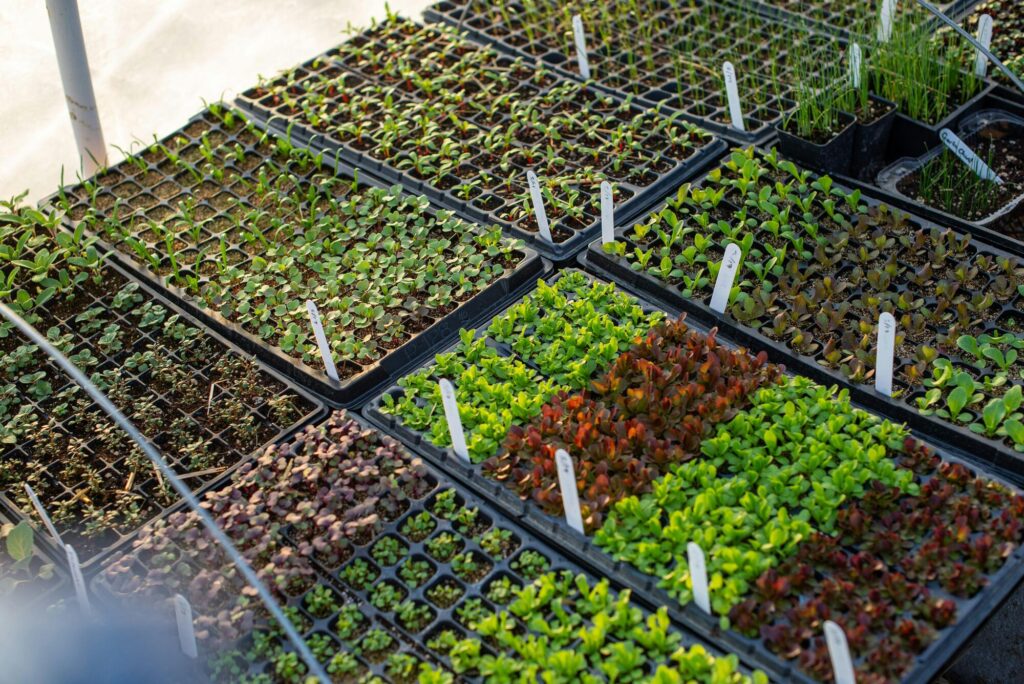Have you ever felt frustrated by a small balcony or tiny backyard that seems too cramped for gardening?
Limited space does not have to mean limited growth. Tiered planter systems allow you to grow more plants while keeping your area organized and visually appealing. From herbs and vegetables to flowers, these vertical solutions can transform even the tiniest spaces into thriving green havens.
This article will guide you on how to maximize every inch of your space with tiered planter systems so you can enjoy a lush, productive garden.
Choosing the Right Tiered Planter
The first step to success with tiered planter systems is selecting the right design. Look for sturdy materials that can handle both weight and weather. A planter that fits the scale of your space will keep your garden organized and balanced.
Size also plays a big role in plant health. Small tiers work well for herbs or flowers, while larger tiers can support vegetables. Picking the right size ensures each plant has enough soil and room to grow.
Making the Most of Vertical Space
Tiered planters help you take advantage of vertical space in small areas. By stacking plants upward, you save floor space for seating or storage. This layout works well for patios, balconies, and even small backyards.
Growing upward also creates layers of greenery that look lush and full. Each tier can be dedicated to a specific plant type. This makes your space both practical and visually appealing.
Many gardeners look to the best vertical gardens for inspiration, as they show how stacked systems can transform even the smallest spots into productive green areas.
Arranging Plants for Growth
How you place plants in the tiers affects their growth. Taller plants belong at the top, where they can reach the sun without blocking others. Smaller herbs or flowers do better on the lower levels.
It also helps to group plants with the same water and light needs. This reduces stress on the plants and makes care easier. A well-arranged system leads to healthier and more productive growth.
Blending Beauty with Function
Tiered planters allow you to mix ornamental plants with edible ones. Bright flowers add color, while herbs and vegetables provide fresh harvests. This blend creates a garden that is both useful and attractive.
A layered mix also improves the look of small outdoor areas. The variety of shapes and colors draws the eye upward. This turns even a small corner into a vibrant focal point.
Caring for Your Tiered Planter
Good soil and consistent watering are key to keeping tiered planters thriving. Lightweight but nutrient-rich soil works best for smaller levels. Using a slow-release fertilizer can provide steady nourishment.
Watering can be simple if you start from the top tier. The moisture trickles down to lower levels, reducing waste. This system also prevents the problem of overwatering at the bottom.
Using Modular Designs
Modular tiered planters let you adjust your garden as your needs change. You can add tiers for new plants or remove them to save space. This flexibility makes them ideal for growing gardens in evolving spaces.
They also make seasonal planting easier. You can swap out sections for flowers in spring or vegetables in summer. With modular designs, your garden can stay fresh and adaptable year-round.
Maximizing Sunlight Exposure
Sunlight placement is crucial in tiered gardening. The top tier naturally gets the most light, making it perfect for sun-loving plants. Lower levels should host plants that thrive in partial shade.
A well-planned layout prevents overcrowding and blocked light. Rotate your planters over time to give every plant equal exposure. This ensures balanced growth and a healthier garden overall.
Saving Space Indoors
Tiered planters are not just for patios or balconies. They work well indoors where space is tight. You can place them near windows to grow herbs, small greens, or even decorative plants.
Indoor planters bring greenery into apartments or offices. They improve air quality and brighten the room without taking much floor space. Vertical gardening indoors makes small spaces more inviting.
Simplifying Watering Systems
Watering is often a challenge in small gardens. A drip irrigation system can make it easier by feeding water from the top down. This method saves water and ensures each level gets enough moisture.
You can also design planters with built-in drainage trays. This prevents soggy soil at the bottom and keeps roots healthy. Simple systems reduce the time needed for daily care.
Creating Zones for Different Plants
Each tier can act as a growing zone. Herbs may thrive in the middle tiers, while flowers bloom best at the top. Leafy greens often prefer the lower shaded levels.
Zoning makes maintenance easier. Plants with similar needs stay grouped together. This setup allows you to grow a wider variety without extra effort.
Extending Growing Seasons
Tiered planters make it easier to protect plants from changing seasons. Smaller units can be moved indoors during cold months. You can also cover them with fabric to guard against frost.
During hot months, shade cloth can protect delicate plants on the lower levels. These adjustments give your plants a longer life. Extending the season means you can enjoy fresh harvests for more of the year.
Adding Visual Interest
Tiered gardens bring layers of color and texture to outdoor spaces. Bright flowers on the top level stand out, while trailing plants spill gracefully from the sides. This creates a dynamic and eye-catching display.
Mixing plant heights and leaf shapes adds even more charm. The garden becomes a focal point without taking up extra ground space. This design balances beauty with efficiency.
Keeping Maintenance Simple
Simple routines help tiered planters stay healthy. Choosing low-maintenance plants like herbs or succulents reduces the need for constant care. These plants thrive with minimal watering and feeding.
Regular pruning also helps keep growth in check. Smaller spaces can quickly look crowded if plants spread too much. Simple upkeep ensures your garden stays neat and thriving.
Grow up Not Out and Make Every Inch Bloom
Maximizing limited space with tiered planter systems shows that creativity can solve practical problems. Even small areas can become vibrant and full of life with the right planning. Watching your plants grow vertically offers both satisfaction and a sense of accomplishment.
Tiered planters also encourage mindful care and connection with nature. They remind us that growth can happen in unexpected places.
Did you learn something new from this article? If so, be sure to check out our blog for more educational content.







